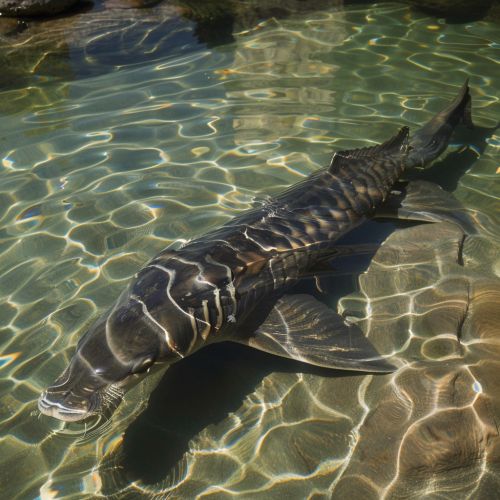Chinese Sturgeon
Introduction
The Chinese sturgeon (Acipenser sinensis) is a unique species of sturgeon, a group of fish known for their distinctive elongated bodies and bony plates. Native to China, the Chinese sturgeon is one of the oldest species of fish in the world, with a lineage dating back more than 140 million years to the Cretaceous period. This species is of significant scientific interest due to its long evolutionary history and its unique adaptations to the freshwater and marine environments of China.


Biology and Life Cycle
The Chinese sturgeon is a large fish, with adults typically reaching lengths of 2-5 meters and weights of up to 500 kilograms. The species is characterized by its elongated body, covered in five rows of bony plates known as scutes. The mouth of the Chinese sturgeon is located on the underside of the head and is surrounded by four barbels, which the fish uses to detect food in the water.
The life cycle of the Chinese sturgeon is complex and involves migrations between freshwater and marine environments. The species is anadromous, meaning it hatches in freshwater, migrates to the sea to grow and mature, and then returns to freshwater to spawn. The timing and location of these migrations are closely tied to seasonal changes in water temperature and flow.
Habitat and Distribution
The Chinese sturgeon is endemic to China and is primarily found in the Yangtze River and its tributaries. The species has a wide distribution in the river, ranging from the estuary near Shanghai to the upper reaches of the river in the Qinghai-Tibet Plateau. The Chinese sturgeon is also known to inhabit the East China Sea and the Yellow Sea during its marine phase.
Conservation Status
The Chinese sturgeon is currently listed as Critically Endangered on the IUCN Red List of Threatened Species. The primary threats to the species are habitat loss and degradation, primarily due to dam construction, and overfishing. Conservation efforts for the Chinese sturgeon are focused on habitat protection and restoration, as well as the establishment of captive breeding programs.
